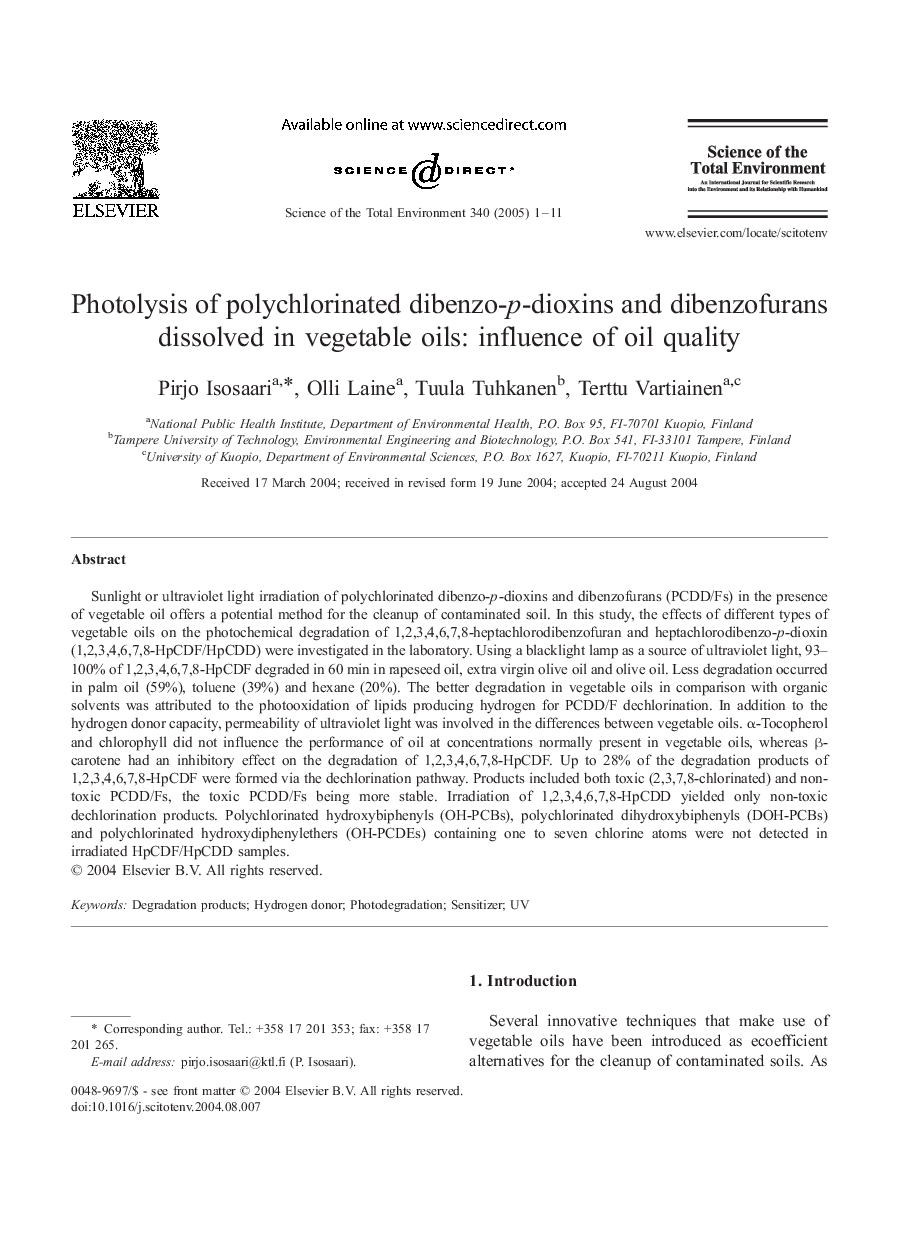| Article ID | Journal | Published Year | Pages | File Type |
|---|---|---|---|---|
| 10110906 | Science of The Total Environment | 2005 | 11 Pages |
Abstract
Sunlight or ultraviolet light irradiation of polychlorinated dibenzo-p-dioxins and dibenzofurans (PCDD/Fs) in the presence of vegetable oil offers a potential method for the cleanup of contaminated soil. In this study, the effects of different types of vegetable oils on the photochemical degradation of 1,2,3,4,6,7,8-heptachlorodibenzofuran and heptachlorodibenzo-p-dioxin (1,2,3,4,6,7,8-HpCDF/HpCDD) were investigated in the laboratory. Using a blacklight lamp as a source of ultraviolet light, 93-100% of 1,2,3,4,6,7,8-HpCDF degraded in 60 min in rapeseed oil, extra virgin olive oil and olive oil. Less degradation occurred in palm oil (59%), toluene (39%) and hexane (20%). The better degradation in vegetable oils in comparison with organic solvents was attributed to the photooxidation of lipids producing hydrogen for PCDD/F dechlorination. In addition to the hydrogen donor capacity, permeability of ultraviolet light was involved in the differences between vegetable oils. α-Tocopherol and chlorophyll did not influence the performance of oil at concentrations normally present in vegetable oils, whereas β-carotene had an inhibitory effect on the degradation of 1,2,3,4,6,7,8-HpCDF. Up to 28% of the degradation products of 1,2,3,4,6,7,8-HpCDF were formed via the dechlorination pathway. Products included both toxic (2,3,7,8-chlorinated) and non-toxic PCDD/Fs, the toxic PCDD/Fs being more stable. Irradiation of 1,2,3,4,6,7,8-HpCDD yielded only non-toxic dechlorination products. Polychlorinated hydroxybiphenyls (OH-PCBs), polychlorinated dihydroxybiphenyls (DOH-PCBs) and polychlorinated hydroxydiphenylethers (OH-PCDEs) containing one to seven chlorine atoms were not detected in irradiated HpCDF/HpCDD samples.
Related Topics
Life Sciences
Environmental Science
Environmental Chemistry
Authors
Pirjo Isosaari, Olli Laine, Tuula Tuhkanen, Terttu Vartiainen,
